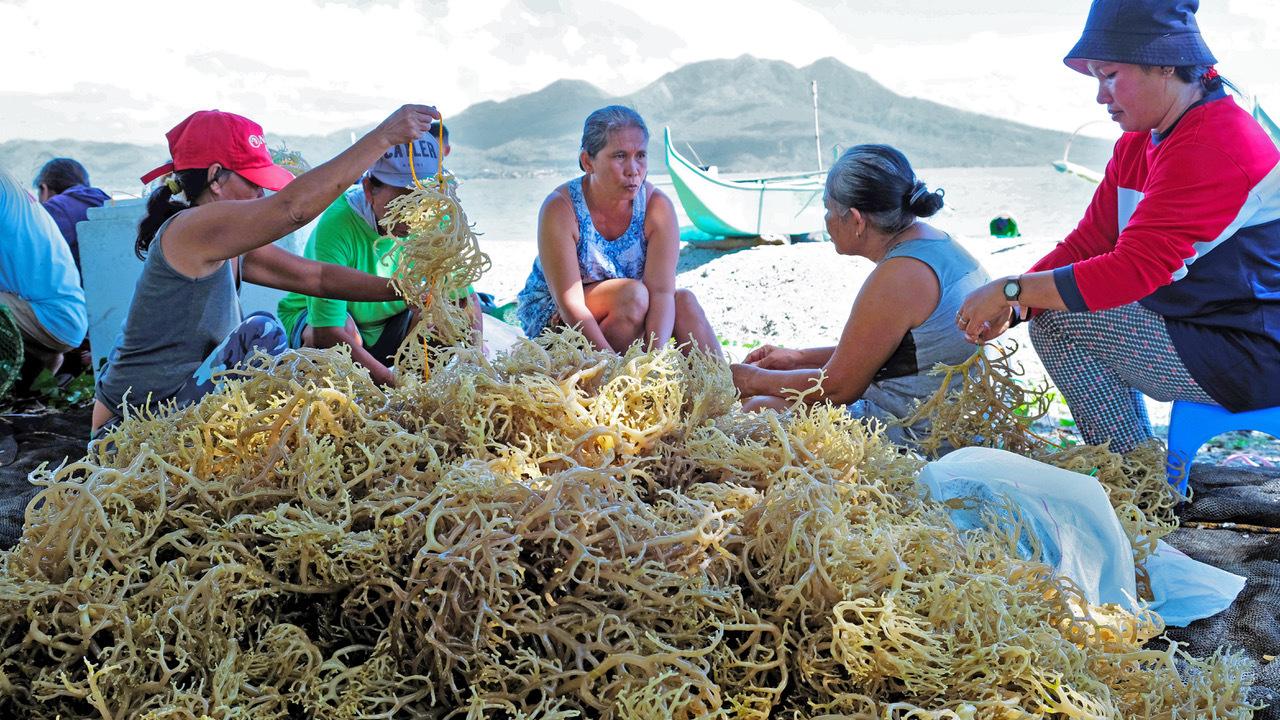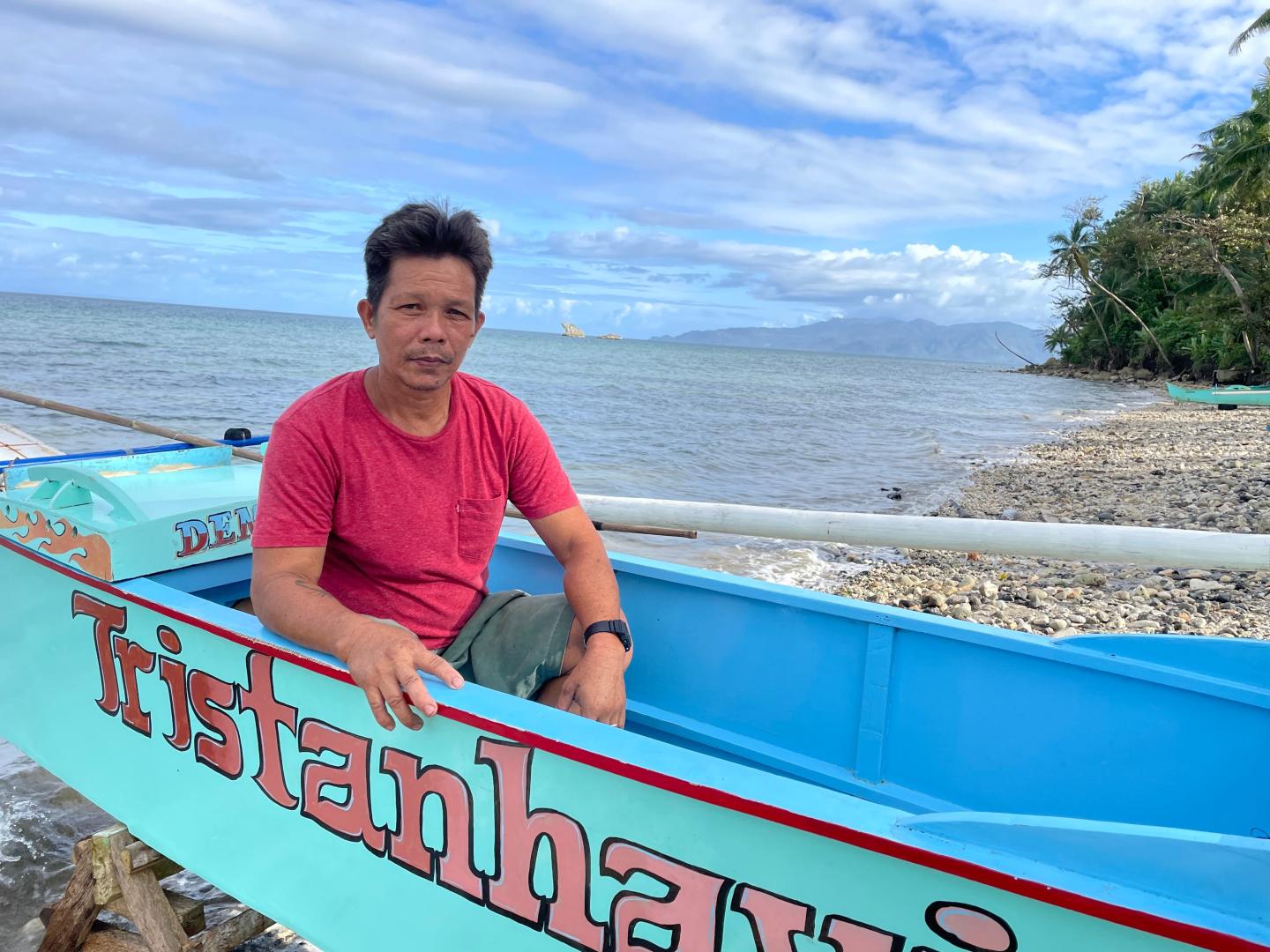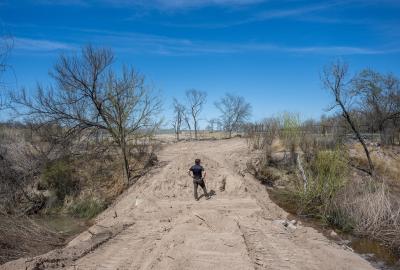Innovative seaweed and mussel farming transforms a Philippine community
Seaweeds are among the most productive organisms on the planet, capable of providing food, habitat, clean water and other benefits. In the shallow water of Cabalian Bay, in the Philippines, one local community is exploring the benefits of farming seaweed alongside mussels, another nutritious and ecologically beneficial food.

In an area devastated by overfishing, pollution and the effects of climate change, residents hope seaweed farming could help restore the marine ecosystem and the local economy.
Seaweed farms don’t require fertilizer or fresh water, and make their own food through photosynthesis. They also improve water quality and can create habitat for marine animals under some conditions.
Alongside the seaweed, community members planted green-lipped mussels, which can be eaten at home or sold locally for extra income. As filter feeders, mussels remove excess nutrients that contribute to algal blooms and kill fish.
“This farm is an attempt to demonstrate that it’s possible to create a system that regenerates nature instead of depleting it, while producing food and jobs,” says marine ecologist Rod Fujita of Environmental Defense Fund, which partnered with local organizations to design and build the farm.

Cabalian Bay was chosen because of its sheltered, biodiverse waters and a cadre of residents eager to develop a local aquaculture industry. Local fisheries have struggled to overcome the effects of overfishing, dynamite fishing and other destructive practices.
“We are excited to learn about seaweed farming,” says Patrick Quiban, president of the Lipanto Womens, Fisherfolk and Farmers Association. “We have been planting trees in the mountains. I’ve now learned we can also plant in the sea.”
A blueprint for a greener tomorrow
The project will also shed light on the potential climate benefits of seaweed farming.
“Our studies to date suggest that seaweed farming sequesters some carbon under some conditions, but much of the carbon that it absorbs is returned to the ocean and atmosphere through marine food webs,” says Fujita.
Marine food webs are complex networks through which energy and materials move, from microbes all the way up to top predators. As seaweed passes through that web, some of the captured carbon is digested by marine life or may sink to the deep ocean, where it can remain for decades. But some of the carbon may also be released back to the ocean or atmosphere as it disperses and decomposes.
The Cabalian Bay project will examine whether seaweed can capture carbon more effectively if it is used to make products that can store carbon, replace carbon-intensive products like plastic and fossil fuels or even suppress greenhouse-gas emissions from cows and manure lagoons. But Fujita notes that more research is needed to confirm the effectiveness of seaweed farming as a climate solution.
“My vision of this project is that it is for the coming generations,” says 76-year-old Bernardo Cadayona, president of the Panian San Isidro Himbangan Mangrove Planters Association. “So they can say there were people who made efforts like this for them. And then maybe they will have the inspiration to do the same.”
The farm began operating in 2023. During the first season, “the seaweed grew like gangbusters,” says Fujita.
The farm is now moving into phase two, which includes carbon measurement and an examination of the farm’s effects on ocean acidification. Ocean acidification — a reduction in seawater pH — is caused primarily by the intake of carbon dioxide (CO2) from the atmosphere. Seaweed farming may be able to reverse ocean acidification, at least locally.
During the second and third years, farmers will experiment with making seaweed-based products, such as agricultural soil additives that can increase water retention and reduce the need for fertilizer. The community plans to eventually create a commercial-scale farm next to the demonstration farm, via a partnership with Coast4sea, a group that helps communities build and operate sustainable seaweed farms.
The seaweed and mussel farm is one of several climate initiatives in the region. Cabalian Bay communities are also developing a coastal habitat restoration plan to help reverse mangrove deforestation, which has made coastal residents more vulnerable to storm surges and left fish with fewer places to reproduce.
“Together, these projects are building sustainable food, economic and ecological systems that can help the community meet the challenges of a warming ocean,” Fujita says. “If successful, this model could be scaled up and replicated throughout the developing tropics.”


